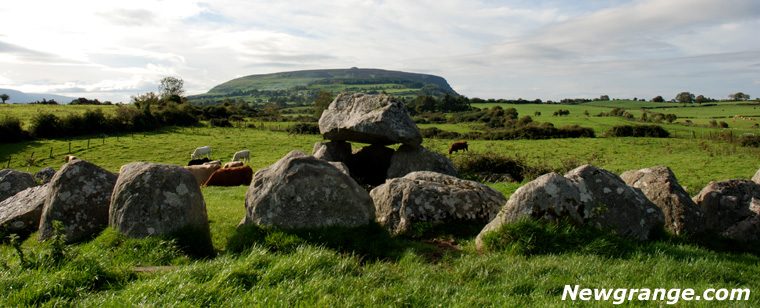Court orders halt to Sligo refuse dump
An article in The Irish Times, 26 July 1983Objections to the opening of a refuse dump by the Sligo Co. Council near a national monument stated to be unique in Europe, of great archaeological and scenic value containing megalithic tombs was taken by five local Sligo residents in the High Court yesterday.
The court was told that the location attracted numerous tourists each year. Frank McGarry, Paddy O'Hara, Particia Mulligan, Neil Cremin and John Hamilton sought an injunction preventing the council from entering a disused pit at Carrowmore adjacent to prehistoric megalithic tombs in order to use it as a refuse dump or pithead.
Mr Garrett Cooney, SC, who with Mr. Henry J.Abbott barrister-at-law (instructed by Damien Tansey and Co.) represented the plaintiffs, said they lived on the outskirts of the town. They feared the proposed dump would become a nuisance to them and they also grounded their application on the basis that the proposed development would be in breach of the council's own development plan.
Mr Justice Keane granted an injunction, until the hearing of the action, on terms that it is expedited as quickly as possible. It restrains the council from proceeding with the proposed refuse tip on the particular site.
In an affidavit Mr McGarry, farmer and equitation school owner, Carrowmore, said the disused sand pit was adjacent to an historic site of a passage of tombs known as Carowmore Passage Tomb Cemetery which was a high amenity area. By reason of its antiquity and interest the cemetery was a very significant tourist attraction to which thousands of tourists came each year.
The council had recognised the special amenity value of the area in their 1979 Development Plan in which the amenities of the cemetery and vicinity were outlined and measures, including their designation as a special amenity area devised.
Mr Peter Shanley, Sc, who with Mr John Gallagher barrister at law, (instructed by Howley and Armstrong) represented the council, claimed that the plaintiffs, as private citizens, had not any action against the council. It would, he said, be a novel contribution to give them such a right. They had no private rights in respect of the breach of the Development Plan which they were seeking to assert.
The plaintiffs, he said, could not allege any injury and accordingly they had not cause of action. Mr Shanley said the council claimed the proposed site was outside the area of the cemetery proper which Professor de Valera considered to be the most important section of the cemetery. The plaintiffs contended that the council did not have the resources or management skill to take the measures recommended by the Irish Institute of Research and Standards for the proper management of the dump but the council claimed they would apply whatever resources were necessary. He claimed the plaintiffs had not discharged the burden of proof which rested on them. If, at a later stage, nuisance was occurring they could come back to court.
Mr Shanley said there was a real difficulty in obtaining suitable sites for refuse dumps. They had an option on the present one for one year and they would lose it at the end of that time. Mr Cooney said there were 453,656 acres in the county, of which 78,720 were blanket bog. With that amount of land available, it should be possible to site the dump in some place other than in an area of such historical and archaeological importance.
Mr Justice Keane said he would not grant the injunction on the question of nuisance. In his view, however, the plaintiffs had established a fair question to be argued under the heading of material contravention of the Council's Development Plan.
Boyne Valley Private Day Tour
 Immerse yourself in the rich heritage and culture of the Boyne Valley with our full-day private tours.
Visit Newgrange World Heritage site, explore the Hill of Slane, where Saint Patrick famously lit the Paschal fire.
Discover the Hill of Tara, the ancient seat of power for the High Kings of Ireland.
Book Now
Immerse yourself in the rich heritage and culture of the Boyne Valley with our full-day private tours.
Visit Newgrange World Heritage site, explore the Hill of Slane, where Saint Patrick famously lit the Paschal fire.
Discover the Hill of Tara, the ancient seat of power for the High Kings of Ireland.
Book Now


